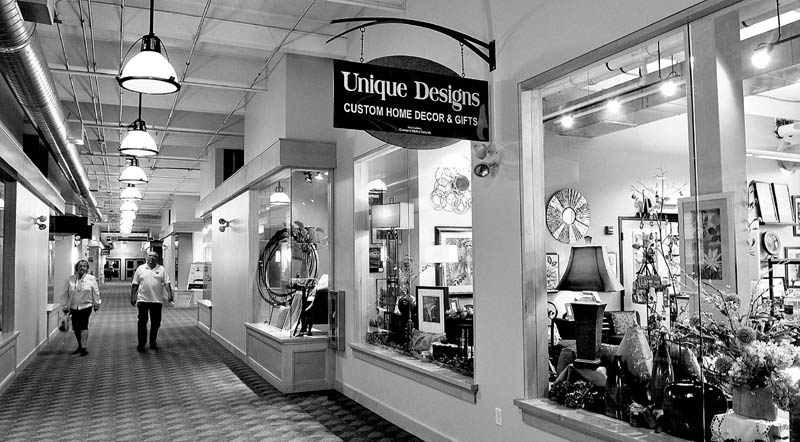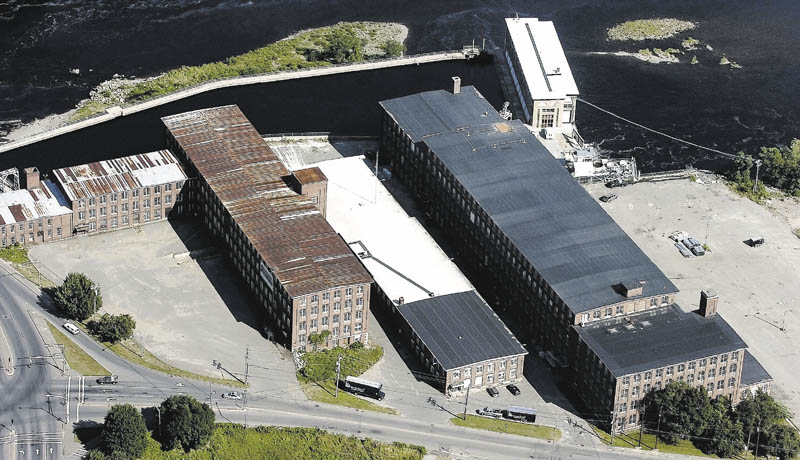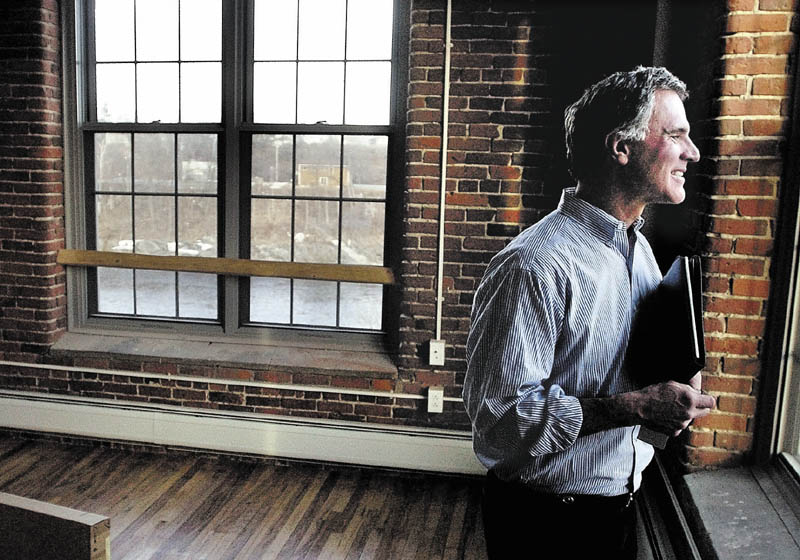The long, slow grind to bring a historic mill back to life in downtown Waterville is receiving a major boost from MaineGeneral Health, an example of how the state’s largest employers are joining with communities and developers to preserve Maine’s cultural heritage.
The pieces of the puzzle are coming together for MaineGeneral, Kennebec County’s largest employer, five years after a 2008 announcement that it planned to embark on the largest reorganization in its history.
Workers are busily adding the finishing touches on MaineGeneral’s new flagship building, the $312 million Alfond Center for Health in Augusta, scheduled to open in November, while the Maine Department of Transportation reconfigures exit 113 of Interstate 95 to improve access to the facility.
It is a satisfying development in the reorganization of MaineGeneral, which began with a couple of false starts, including a plan, abandoned in 2007, for a $107 million expansion of the Thayer campus.
However, it was a recent announcement from the hospital’s chief executive officer, Chuck Hays, that gave historic preservation enthusiasts cause for cheer.
Hays said the hospital would lease 30,000 additional square feet at the Hathaway Creative Center, a building on the National Register of Historic Places, where the hospital already leases 40,000 square feet.
“We are pleased to make another significant contribution to Waterville’s downtown revitalization,” Hays said, “and to be a part of the preservation of this historic landmark.”
The lease is a major coup for the project’s developers, whose $30 million effort to renovate and attract residents to the building has been slowed by the national recession.
Tom Niemann, lead developer for the Hathaway Center, said he first received a phone call from his broker about 14 months ago and was told MaineGeneral wanted to know whether he and his partners would be interested in the deal.
“I had to kind of peel myself off the ceiling. Of course we were interested,” Niemann said. “I played it cool, though.”
Historic Hathaway
The lease will be a bright chapter in the building’s long history.
The Hathaway Center, a five-story, 230,000-square-foot building, was one of three structures built around 1880 as part of the Lockwood Cotton Mill, where water power from Ticonic Falls was harnessed to manufacture and weave cotton into products including high-quality bed linens.
The mill, which once employed 1,300 people, shut down in 1955 after a long period of decline punctuated by labor disputes.
The following year, the Hathaway Shirt Co. began producing shirts there, until it closed in 2003.
Soon after, Rhode Island-based developer Paul Boghossian, Niemann’s partner in the enterprise, took an interest in the property and began trying to leverage the financial forces necessary to bring it back to life.
They purchased the property for $350,000 from the city in 2006, and it was officially placed on the historic registry in 2007.
The 67 apartments on the fourth and fifth floors of the building filled up quickly, but the office space on the second and third floors, as well as the retail space on the first floor, proved more difficult to lease.
MaineGeneral’s plan will increase its workforce at the site from 150 to about 330 in July 2014, filling nearly all of the available office space. MaineGeneral has about 4,100 total employees.
In all, more than 600 people will be living and working in the building, according to Boghossian.
The remaining piece of the puzzle for Hathaway is the first-floor retail space, which has hosted a handful of businesses. Unique Designs, a gift store, is still there, but Maynard Chocolates, which opened in late 2009, moved on to another location.
Maureen Kibler, the newest retailer, who opened the Button Down Cafe in February, said the jury is still out.
“We’re crossing our fingers,” she said. “There is an uncertainty.”
Kibler said she loves the building, and the current residents have embraced her business, but she needs more customer traffic to feel secure.
Niemann said the larger MaineGeneral workforce will make the remaining retail space more attractive, and that other businesses have expressed interest.
Niemann wouldn’t reveal the names of the interested businesses, but he said they are existing Maine businesses with expansion plans.
Old buildings fuel new model
The circumstances are different for each of Maine’s 1,600 historic properties, but many represent a development opportunity that has persisted throughout the leanest years of the recession.
Robert O’Brien, assistant director at Maine Preservation, said large companies or organizations such as MaineGeneral are well-matched to historic properties, particularly former mills that tend to have large, open floor plans.
O’Brien said the Hathaway deal is an example of a successful model for public and private partnership that has played out in other communities, such as Pierce Atwood law firm’s recent move into a historic building on Merrill’s Wharf in Portland.
Other historic properties either have served a continued function, or been reborn, thanks to involvement from large employers, as is the case with Hathorn Hall at Bates College in Lewiston, or Massachusetts Hall at Bowdoin College in Brunswick. Both colleges are among the top 35 employers in the state.
The former Children’s Hospital on High Street in Portland was developed with the support of the Maine State Housing Authority into a low-income housing project called Elm Terrace, while the historic Gerald Hotel in Fairfield is being developed into low-income housing for seniors.
In all, O’Brien said, historic preservation tax credits have been responsible for a quarter of a billion dollars in projects since 2008.
Darryl Sterling, the executive director of the Central Maine Growth Council, said there is room in a community for both new construction and renovation of existing historic buildings.
“It’s a balance,” he said. “It’s everything in its place.”
Costs and benefits
Sterling said the Hathaway site’s downtown location is important and will bring Waterville more benefits than a building on the outskirts of the city.
“It helps your central business district, the heart of your community, because you have the population density that allows people to live, work and shop in your community,” he said.
Niemann said restoring historic properties makes sense in a sluggish economy. He doesn’t even think about new construction, he said.
“It’s kind of waste not, want not,” he said.
However, he also predicted the trend will continue to be popular for developers in a boom economy.
While it’s true that a new structure can often be built for less money than the cost to renovate a historic building, he said the final product is far more appealing than a cheaply built modern building.
“No matter who’s in them, people are happy,” he said, “whether you live in them, work in them, or eat a meal in them. They’ve got exposed brick, wood floors, high ceilings, great sunlight, and then to know you’re a part of history.”
O’Brien said the sticker price for the building is only one component of the cost. Infrastructure costs, including bringing public roads and utilities to a new property, often tilt the scale in favor of renovating an existing property that already has those.
When renovating a historic building, help can come from many quarters. The Hathaway building benefited from a tax-increment financing district from the city of Waterville, as well as state and national historic tax credits, by working with the National Park Service and the Maine Historic Preservation Commission.
“The amount of economic activity that occurs far outweighs the public investment,” O’Brien said.
Aside from the jobs, O’Brien said, the projects pay off for cities and towns in the form of added property tax revenue generated by increased property value in the immediate area of the building.
“From a business standpoint, you can’t replace these kinds of structures, the history,” Niemann said. “Think of how many people have been associated with the history of the Hathaway Creative Center. It’s the legacy of the community.”
Matt Hongoltz-Hetling — 861-9287
mhhetling@centralmaine.com
Send questions/comments to the editors.





Success. Please wait for the page to reload. If the page does not reload within 5 seconds, please refresh the page.
Enter your email and password to access comments.
Hi, to comment on stories you must . This profile is in addition to your subscription and website login.
Already have a commenting profile? .
Invalid username/password.
Please check your email to confirm and complete your registration.
Only subscribers are eligible to post comments. Please subscribe or login first for digital access. Here’s why.
Use the form below to reset your password. When you've submitted your account email, we will send an email with a reset code.